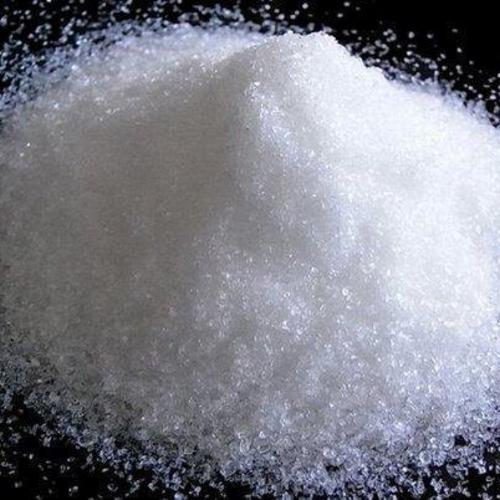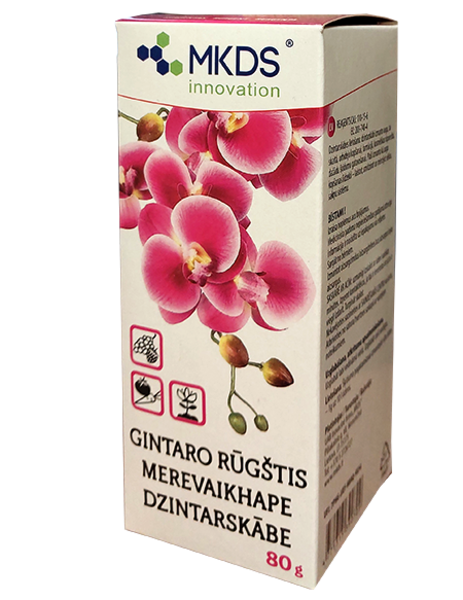Natural biostimulant and micro-fertilizer. Increases seed germination and vigor by 30-50%, enhances root formation, and boosts yield by up to 40%.
Result of application: increases frost and drought resistance, disease resistance, increases vitamin and sugar content in fruits.
Applications:
* Soaking seeds and roots.
* Watering and spraying seedlings.
* Plant resuscitation (stress, transplanting).
* Suitable for all crops: vegetables, berries, flowers, houseplants (especially orchids).
Net weight: 80.0 g.
Shelf life: unlimited.
Instructions for use:
1. Seed preparation: Dissolve 1.0 g in 200 ml of water. Soak seeds for 12 hours before planting.
2. Spraying (vegetables, fruits, potatoes, flowers): Dissolve 1.0 g in 500 ml of water. Spray 2 times: before flowering and at the beginning of fruit ripening. For potatoes: spray tops 2-3 times before flowering.
3. Soil improvement: Watering the soil with a solution (1 g per 5-10 L of water) restores beneficial microflora and neutralizes toxins.
4. Cuttings: Immerse the cutting cut-side down in the solution (0.2 g per 1 L of water) for 12 hours for rapid rooting.
5. Resuscitation: If the plant wilts or dries out after transplanting, spray it with a solution (2.5 g per 1 L of water) once every 2–3 weeks.

What is Succinic Acid?
These are white odorless crystals, tasting like citric acid. First obtained in the 17th century by distillation of amber. It is a natural component present in all living organisms.
It activates metabolism, improves cellular respiration and transport of substances. For a plant, it is an "energy drink" that is not a fertilizer in the literal sense (does not replace NPK), but helps the plant assimilate nutrition from the soil.
Advantages: environmentally friendly product, safe for humans and bees, does not accumulate in the crop, prevents the accumulation of nitrates in fruits.
Specially for ORCHIDS.
Orchids (Phalaenopsis, etc.) respond to succinic acid best of all.
Dosage: 1 g per 5 liters of water.
Action: strengthens roots, increases leaf turgor (firmness), stimulates the release of new flower stalks.
How to apply: spray leaves (create mist) or wipe them with a cloth soaked in the solution.
Important nuances and contraindications:
1. How to dissolve: dissolve crystals in a small amount of hot water, and then bring the volume to the required amount with cool water.
2. Solution storage: the prepared solution is usable for no more than 3 days.
3. Dormancy period: do not use in autumn and winter (except for emergency resuscitation) so as not to disrupt the plant's biological clock.
4. Frequency: for potted houseplants, use no more than once a month (so as not to acidify the limited volume of soil).
5. Not a panacea: the acid activates immunity but does not kill pests and fungi directly.
Most often, succinic acid is used to achieve the following goals:
increasing resistance to external aggressive factors;
preventing infection; improving soil quality;
activating root system growth.
Succinic acid is not considered toxic: it does not harm humans, animals, or plants when used correctly.
Proper use of succinic acid stimulates the flowering of houseplants, improves the yield of vegetable crops, and increases the nutritional value of the soil.
Instructions for using succinic acid.
To prepare the solution, use warm boiled water. Dissolve 1 gram of acid (1/3 teaspoon) in 200 ml of water, and then increase the volume to 1 litre. This makes a 0.1% solution.
Treatment of tubers, seeds, and seedlings before planting.
For faster germination of potatoes and seeds, they are treated with a 0.1% succinic acid solution (base solution). Seeds need to be left in the solution overnight; potato tubers are sprayed with a sprayer before planting in open ground.
When propagating plants by cuttings, freshly cut stems are dipped into a 0.1% solution for 24 hours, and then germinated in the standard way.
Seedling treatment is performed in two ways: spraying the leaves with a sprayer or soaking the root system.
Spraying is carried out the day before planting the plants in open ground. Soaking the root system is performed immediately before planting for one hour.
Seedlings are treated with a 0.2% concentration solution (2 g per 1 L). As a result, seedlings adapt faster to the new location. And to stimulate the development of the root system, additional treatment is performed after planting.
Stimulating root system growth.
After planting seedlings, plants need at least 14 days to adapt to the new place. To help the plant and shorten the adaptation period, one week after planting, water the roots with a 0.2% succinic acid solution. This procedure increases the survival rate of the crop and stimulates the development of the root system. For maximum effectiveness, the soil should be soaked to the depth of the expected root location.
For the same purpose, the leaves of planted seedlings are sprayed. A 0.2% solution is used 7-10 days after planting. The procedure is performed early in the morning or in the evening, using a sprayer.
When caring for plants, succinic acid solution can be mixed with mineral and organic fertilizers, as well as chemical preparations against pests and diseases.
Care for houseplants.
It happens that houseplants, under favorable conditions, refuse to form buds or grow poorly. To accelerate flower formation, a 0.1% solution (1 g per 1 L) is used. Leaves and stems are sprayed every 15 days. This procedure will be useful if it is necessary to stimulate the formation of new shoots.
Wishing to prolong the flowering period, leaves are also sprayed. The first treatment is performed during the bud formation period, and after the petals open, spraying is performed at intervals of 10 days. Houseplants weakened by diseases or pests are sprayed with a 0.2% solution (2 g per 1 L); the root system can also be soaked in the solution overnight, and then planted.















